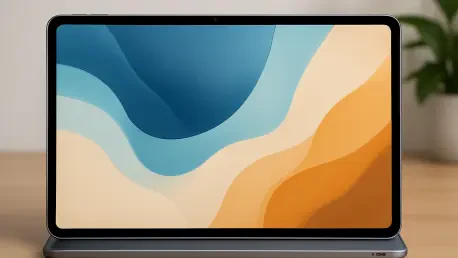I’m thrilled to sit down with Oscar Vail, a renowned technology expert whose insights into emerging fields like quantum computing, robotics, and open-source projects have made him a trusted voice in the industry. With a finger on the pulse of consumer electronics, Oscar has recently spent time with the Honor MagicPad 3, a tablet that promises high-end features at a more accessible price point. In our conversation, we dive into the tablet’s design and portability, the quality of its display for media consumption, its performance for both everyday tasks and gaming, and its standout battery life. We also touch on some of the drawbacks, like limited software support, and explore how this device fits into the competitive tablet market. Let’s get started.
What first caught your eye about the Honor MagicPad 3 when you got your hands on it?
Honestly, it was the sheer sleekness of the design. Unboxing the Honor MagicPad 3, I was immediately struck by how thin and light it is—thinner than even the iPad Air at just 5.79mm and weighing only 595 grams. It felt like a premium device right out of the gate, and I couldn’t wait to see how that portability translated to real-world use.
How does the build quality and overall feel of this tablet stack up against other devices in its class?
Compared to something like the iPad Air, the Honor MagicPad 3 holds its own in terms of build quality. The metallic body gives it a sturdy, high-end vibe, and the slim profile makes it incredibly easy to carry around. However, the textured back cover is a bit of a wildcard. It’s unique and offers great grip, but it almost feels like a vinyl sticker, which can make the tablet seem less premium up close. It’s a divisive choice—some will love the distinct look, while others might find it cheapens the experience.
Can you tell us more about how the slim and lightweight design impacts daily use?
It’s a game-changer for portability. I’ve been tossing it into my bag without a second thought, and it’s perfect for long sessions of reading or watching content because it’s so easy to hold. Whether I’m on a train or lounging at home, the lightweight build means I’m not fatigued after using it for hours. It’s ideal for anyone who’s always on the go and needs a device that doesn’t weigh them down.
Let’s talk about the display. How does the 3.2K LCD screen perform when you’re streaming movies or browsing?
The 13.3-inch 3.2K display is a real highlight for media consumption. It’s bright—up to 1,000 nits—and the colors are vibrant, making movies on platforms like Netflix or Amazon Prime Video look stunning. Scrolling through apps or websites feels buttery smooth thanks to the 165Hz refresh rate. That said, it’s not an OLED panel, unlike its predecessor, so the blacks aren’t as deep, and the contrast isn’t quite as punchy. It’s still a fantastic screen for the price, though.
Speaking of performance, how does the Snapdragon 8 Gen 3 chip handle everything from casual use to more demanding tasks?
The Snapdragon 8 Gen 3, paired with 16GB of RAM, makes this tablet a powerhouse. For everyday stuff like browsing, streaming, or multitasking between apps, there’s zero lag—everything just flows seamlessly. Even with heavier tasks like gaming, it holds up impressively. I played demanding titles like Call of Duty Mobile on max settings, and it ran flawlessly at a steady frame rate. It does get a tad warm at the top middle during extended gaming sessions, but never to the point of discomfort or performance drops.
Battery life is often a big selling point for tablets. Can you share your experience with the Honor MagicPad 3’s endurance?
The battery life is nothing short of phenomenal. With a 12,450mAh silicon-carbon battery, I’ve gone through full days of heavy use—think editing documents, streaming 4K videos at max brightness, and casual browsing—and still had over 80% left. There were times I left it on standby for days, and it barely lost any charge. It’s easily the best battery performance I’ve seen in a tablet, outclassing competitors by a wide margin. It’s perfect for long trips or just not worrying about plugging in.
One concern with this tablet is the limited software update support. How do you think that affects its long-term value?
It’s definitely a significant drawback. Honor has committed to just one major Android update and two years of security patches, which is disappointing for a device that’s otherwise so compelling. In terms of long-term value, it means the tablet has a built-in expiration date for security-conscious users. While the hardware is fantastic, this limited support could make some buyers hesitant, especially when cheaper tablets offer longer update cycles. I hope Honor reconsiders this policy, as they’ve hinted at possibly extending support.
What’s your forecast for the future of budget-friendly premium tablets like the Honor MagicPad 3 in the market?
I think we’re going to see more tablets like the Honor MagicPad 3—devices that pack high-end specs and features into a more affordable package—continue to disrupt the market. As manufacturers refine their designs and chipsets become more powerful and cost-effective, the line between budget and premium will keep blurring. The challenge will be balancing price with long-term support, as that’s where trust and value really come into play. I expect competition to heat up, especially in the Android tablet space, pushing innovation in areas like battery life and display tech even further.









